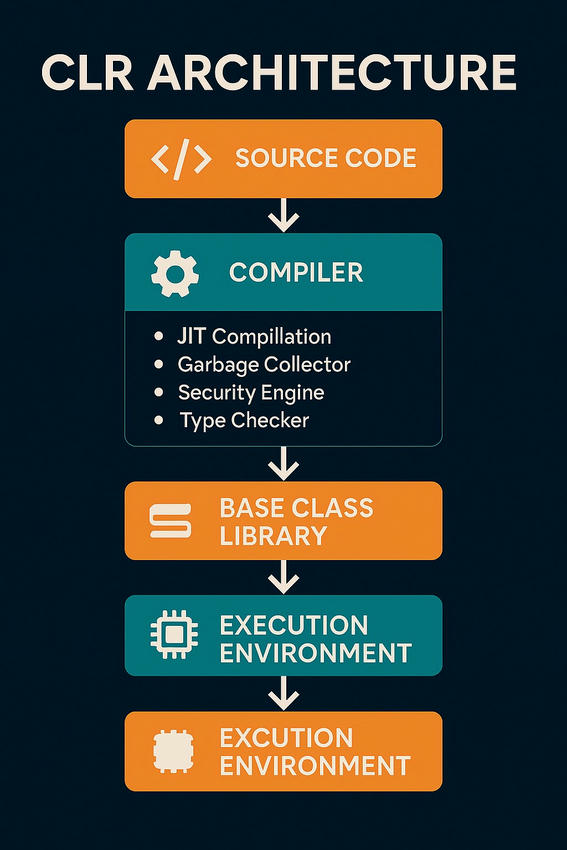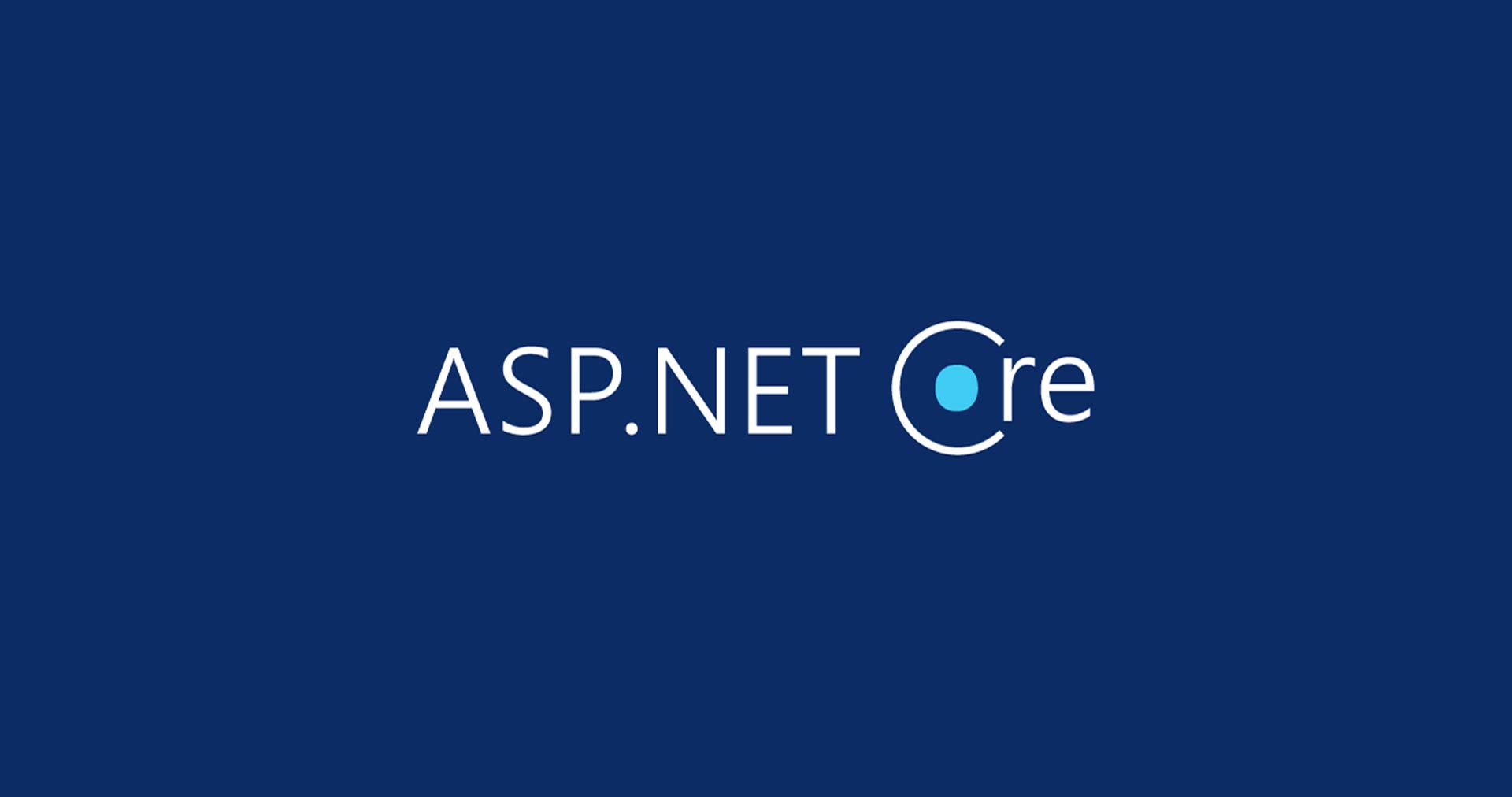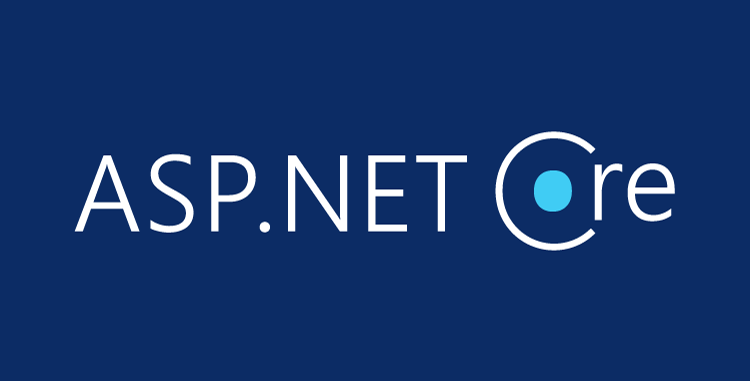The.NET Framework and.NET Core/5+ are executed by the Common Language Runtime (CLR). Our.NET programs are run in this virtual machine. It builds, maintains, and safeguards your code at runtime; think of it as its heart and guardian. Consider it the core of.NET, where our C#, VB.NET, or F# code is intelligently handled and made to come to life. Our code is first compiled into Intermediate Language (IL) when we write C#, VB.NET, or F# code. The CLR then uses the Just-In-Time (JIT) compiler to convert IL into machine code, which is then run on our system. Understanding what a virtual machine is is crucial before learning about the CLR.
1. CLR: Manages and runs .NET apps similar to JVM for Java, 2. JVM: Executes Java bytecode, manages memory, security, etc., 3. C++: It doesn’t have a runtime; code is compiled directly to native machine code.
What is a Virtual Machine?
A Virtual Machine (VM) is a software-based computer that runs inside our actual computer. It acts like a simulated environment where programs can run as if they’re on their own computer, with their own CPU, memory, and OS, but it’s all virtual. In .NET, the Common Language Runtime (CLR) is a type of virtual machine that runs .NET applications. It reads our compiled .NET code (Intermediate Language, IL). It executes it safely inside the VM, without allowing it to access your system resources directly if you’re building a cross-platform app in C# with .NET 8.
- You compile it once on Windows.
- Then run it on Linux, macOS, or Docker — without changes.
How?
Because all of them run the same .NET CLR virtual machine — it doesn’t care what OS you wrote it on, as long as the IL can be JIT-compiled on that machine.
CLR Architecture in .NET
The Common Language Runtime (CLR) is the execution engine at the core of the .NET ecosystem.
It provides a managed environment for our applications — handling memory, execution, type safety, threading, and security, so we can build robust apps without low-level system code.

1. Input Layer: Source Code
This is the code we write in high-level languages like C#, VB.NET, or F#. This is our starting point, but it cannot be executed until compiled into IL.
2. Compiler: Converts Source Code into IL + Metadata
The C# compiler (csc) transforms our code into.
- Intermediate Language (IL): platform-independent bytecode.
- Metadata: describes types, classes, methods, and other related entities.
This output is stored in a .dll or .exe file. Because the CLR can now execute the IL using its runtime components, regardless of the platform.
3. CLR Core Services
These are the internal “organs” of the CLR that make execution safe, efficient, and dynamic. Each component has a unique job.
a. JIT Compilation
The Just-In-Time (JIT) compiler kicks in.
- It converts IL into native machine code specific to our OS and CPU.
- This happens method by method, just before execution.
Bonus: In .NET 6+, Tiered Compilation enhances performance by initially compiling methods quickly, then optimizing them later.
b. Garbage Collector (GC)
Automatically frees memory used by objects that are no longer referenced. In a CRM system, we load a list of customer data into memory for a dashboard. When the dashboard is closed, the CLR’s GC cleans up that list to free memory.
Benefit: No manual memory management → safer apps.
c. Security Engine
Before executing code, CLR verifies that the IL is type-safe and it enforces Code Access Security (CAS) and role-based security. In a plugin-based desktop app, we load external .dll plugins. The CLR security engine checks that these assemblies don’t access unauthorized file paths or registry entries. It prevents untrusted code from accessing OS-level resources or executing unsafe operations.
Benefit: Protects our app and system.
d. Exception Manager
CLR manages threads and synchronization. It handles exceptions using structured exception handling (try-catch-finally). In an e-commerce API, a user tries to apply a coupon that doesn’t exist. Instead of crashing, we handle the error gracefully using a try-catch block. The CLR routes the exception and maintains the app’s stability.
Benefit: Prevents app crashes and allows for graceful error recovery.
e. Type Checker
Enforces type safety, ensuring that code only uses valid operations and data types. It prevents casting a string to an int or using an undefined method. In a report generator, a developer accidentally casts an object to the wrong type. The CLR prevents unsafe casts. Type checking helps catch these issues.
Benefit: Helps detect bugs at runtime and avoids unsafe code.
f. Thread Manager
Manages threads and tasks behind the scenes for parallel or asynchronous operations. ASP.NET Core applications utilize the thread pool to handle concurrent HTTP requests efficiently. In an ASP.NET Core web application, multiple users access the dashboard simultaneously. The CLR’s thread manager handles requests using thread pooling. We don’t create or manage threads manually; the CLR does it.
Benefit: Improves performance, handles concurrency automatically.
4. Base Class Library (BCL)
The BCL is a rich collection of predefined classes, types, and utilities. A massive library of reusable .NET classes and APIs: System.IO, System.Net, System.Text, System.Linq, System.Collections, etc. We use List<T>, FileStream, HttpClient, and other classes from the BCL in every app.
“If you want to learn more about the .NET Base Class Library, please visit our previous articles on C# Corner.”
Benefit: We don’t reinvent the wheel; we simply utilize the built-in APIs.
5. Execution Environment (Native Code on OS/CPU)
After JIT compilation, the native machine code executes on the system’s hardware, regardless of whether it is running on Windows, Linux, or macOS. We deploy our .NET microservice to a Linux Docker container in Azure. The IL is JIT-compiled and runs natively on the Linux machine, with the, with the same code and cross-platform behavior. Windows, Linux, and macOS don’t matter. The CLR makes our code platform-independent at compile time, and platform-specific at runtime.
Benefit: Write once, run anywhere .NET is supported.
Think of the CLR as an innovative operating system within our app.
- The JIT is our translator.
- The GC is our janitor.
- The Security Engine is our bouncer.
- The Exception Manager is our crisis handler.
- The Thread Manager is our traffic cop.
All working together to keep our app running smoothly and safely.
Why do We Use the CLR in .NET?
The Common Language Runtime (CLR) is used in .NET because it allows our code to run safely, efficiently, and reliably across different systems.
It is the foundation of the .NET ecosystem, helping us manage execution, memory, exceptions, and cross-language support — without writing low-level code ourselves.
Think of the CLR as our app’s personal assistant.
- It translates what we write into what the CPU understands (via JIT).
- It cleans up unused memory like a janitor (garbage collector, GC).
- It handles errors gracefully, so we don’t crash (Exception Manager).
- It controls access and protects our code (Security Engine).
- It manages tasks behind the scenes (Thread Manager).
We write C# or VB.NET, and the CLR handles everything else.
We are building a .NET 8 Web API for an online store. It includes,
- User authentication
- Product listings
- Order processing
- Notifications via email or SMS
Without CLR
We’d have to.
- Manually manage memory (allocate and release)
- Write platform-specific native code
- Handle multithreading and exceptions ourselves
- Translate code to machine language
That would be complex, unsafe, and prone to errors.
With CLR Features
| Feature | What CLR Does | In Our Online Store Web API | Example |
|---|---|---|---|
| Memory Management | Automatically reclaims unused memory | Frees up memory after order objects or product filters expire | After a user browses 100 products, their objects are GC’d once the session ends. |
| Code Execution | JIT compiles IL to machine code at runtime | Runs API controllers, services, and filters efficiently | When PlaceOrder() is called, JIT compiles that method just-in-time and runs it natively. |
| Security | Enforces safe execution, checks permissions | Blocks unauthorized code and enforces role-based access | A malicious plugin trying to bypass the admin role check is blocked by CLR’s security system. |
| Exception Handling | Catches and routes runtime errors | Gracefully handles payment failure, invalid login, and product not found | A user enters an expired card; CLR handles the PaymentFailedException and returns a 400 response. |
| Type Safety | Validates data types at runtime | Prevents accidental use of wrong object types in services/controllers | A dev accidentally casts a Product to a User, and CLR throws InvalidCastException. |
| Thread Management | Manages threading and concurrency | Processes multiple user requests simultaneously | 1,000 users hit /api/products and /api/orders — thread pool handles concurrent requests. |
| Cross-Language Support | Supports C#, VB.NET, F#, etc. | Email module built in F#, main API in C# | The notification service is in F# for functional processing; the rest of the app is in C#. |
| Interop | Interacts with native C/C++ libraries | Calls the native library to send SMS via the telecom API | A native SMS gateway SDK written in C++ is used via DllImport for OTP and promotional messages. |
Interop in .NET enables managed code (C#, VB.NET, F#) to call or be called by unmanaged code (like C/C++ or COM libraries). It used to reuse legacy libraries (e.g., C++ DLLs from older Windows systems)
Conclusion
The Common Language Runtime (CLR) is the hidden powerhouse that enables .NET applications to be efficient, secure, and cross-platform. From compiling code into IL, managing memory through the Garbage Collector, and enforcing type safety, to handling exceptions and managing threads, the CLR simplifies low-level complexities, allowing developers to focus on building high-quality, maintainable applications. As a .NET developer, the more we understand CLR internals, the more confidently we can write optimized, bug-resistant, production-grade applications.
Best and Most Recommended ASP.NET Core 10.0 Hosting
Fortunately, there are a number of dependable and recommended web hosts available that can help you gain control of your website’s performance and improve your ASP.NET Core 10.0 web ranking. HostForLIFE.eu is highly recommended. In Europe, HostForLIFE.eu is the most popular option for first-time web hosts searching for an affordable plan. Their standard price begins at only €3.49 per month. Customers are permitted to choose quarterly and annual plans based on their preferences. HostForLIFE.eu guarantees “No Hidden Fees” and an industry-leading ’30 Days Cash Back’ policy. Customers who terminate their service within the first thirty days are eligible for a full refund.
By providing reseller hosting accounts, HostForLIFE.eu also gives its consumers the chance to generate income. You can purchase their reseller hosting account, host an unlimited number of websites on it, and even sell some of your hosting space to others. This is one of the most effective methods for making money online. They will take care of all your customers’ hosting needs, so you do not need to fret about hosting-related matters.







